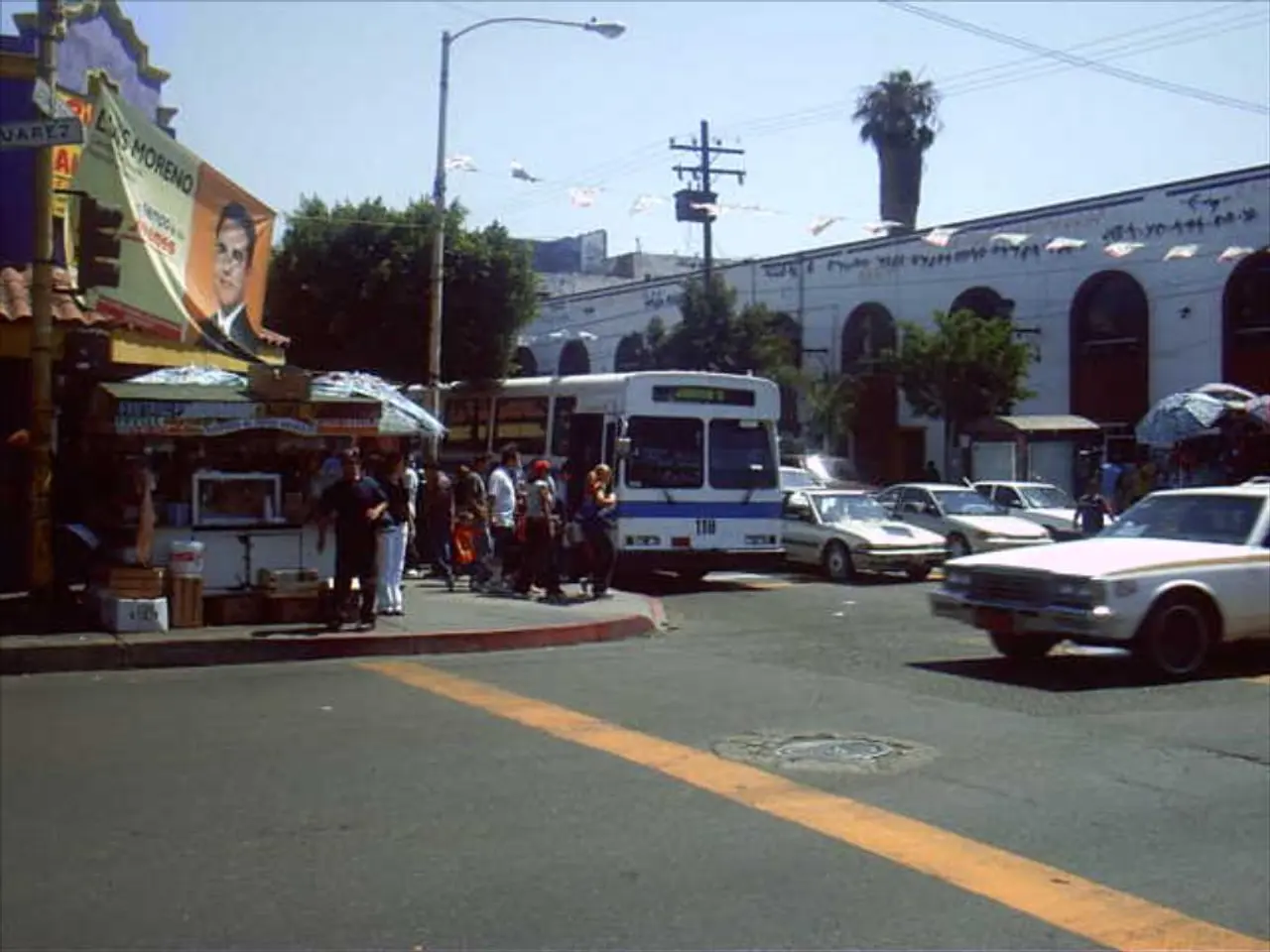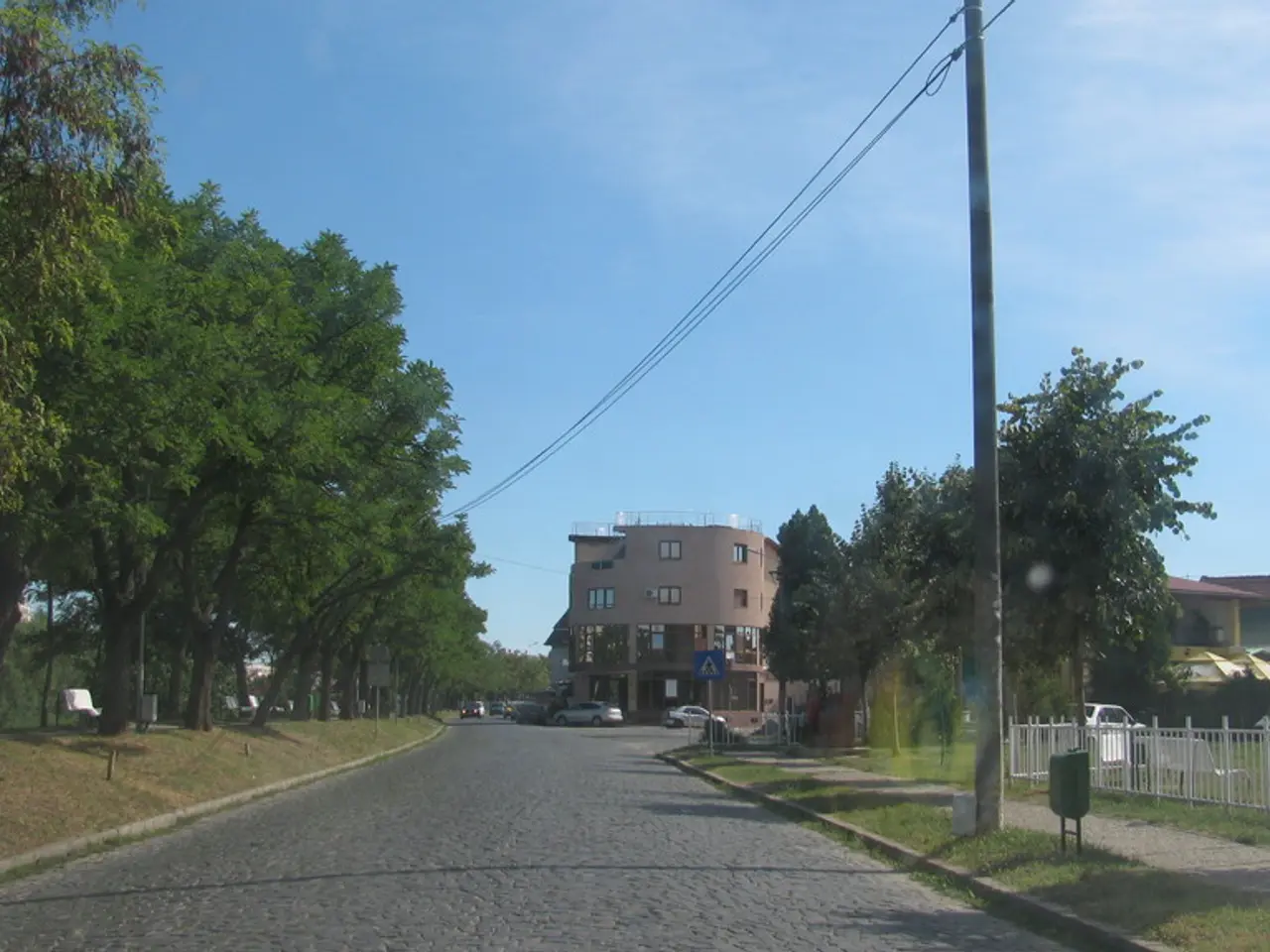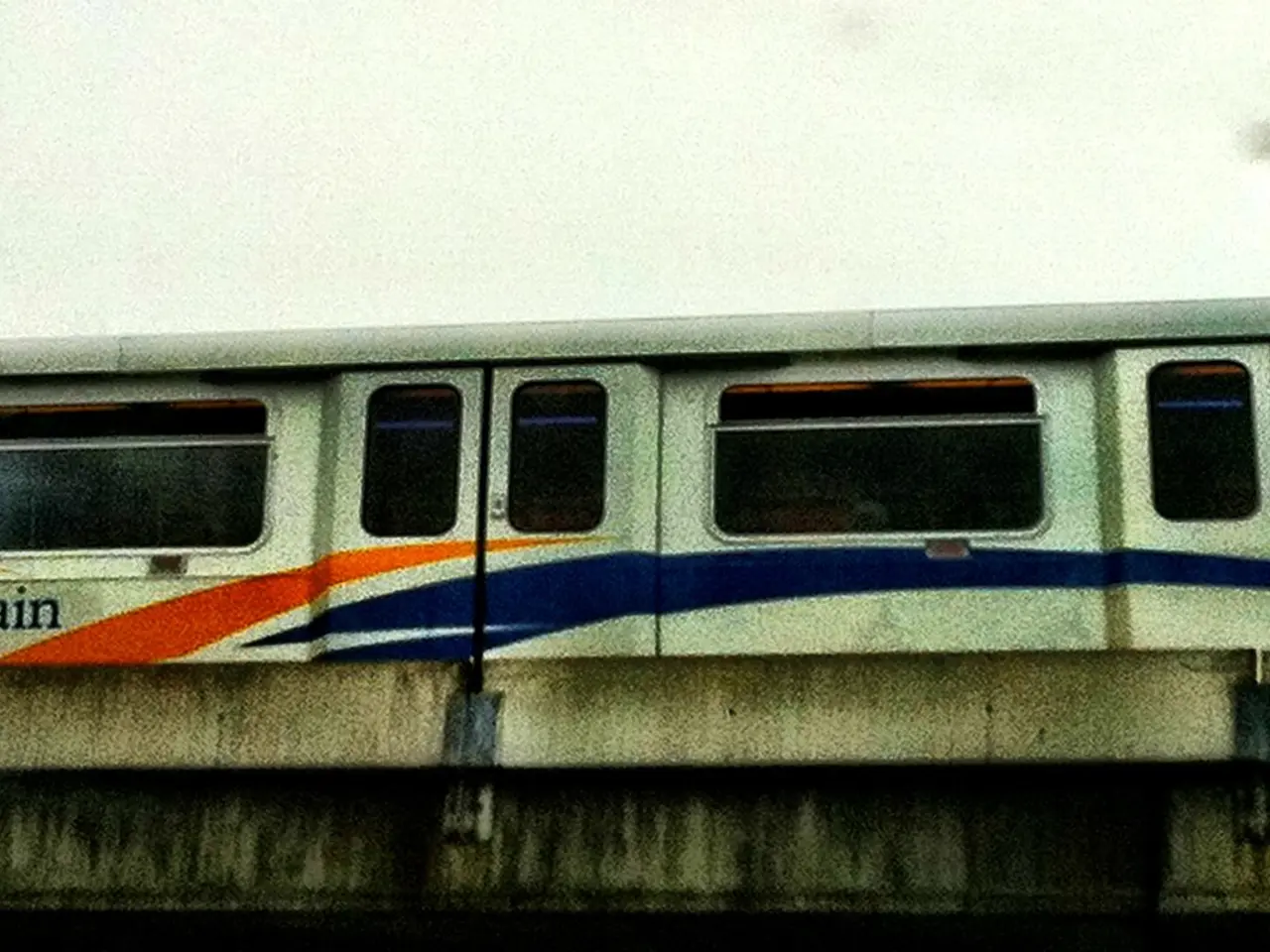Chronic traffic congestion on the A8 highway.
In the picturesque Rosenheim district of Bavaria, a novel idea for traffic management is being proposed. The plan is to implement a ban on exiting the A8 motorway during traffic jams, starting mid-August. This move, if executed, could potentially set a precedent for other motorways in Germany.
The affected stretch of the A8 motorway is only two lanes wide and lacks a hard shoulder. Construction sites in this section are causing traffic congestion, creating a bottleneck where traffic often backs up. To address the issue of traffic congestion and improve the quality of life for residents in the area, the ban on exiting from the A8 in southern Rosenheim has been proposed.
The ban will apply from Friday to Sunday, as well as on public holidays. However, it will only apply to detour traffic and will allow exceptions for residents or vehicles with a specific destination in the district. The police will monitor compliance through increased patrols, and the federal government responsible for motorways will set up signs to enforce the ban on exiting.
Parliamentary State Secretary Ulrich Lange wants to prevent traffic from rolling through town centers, stating that residents in the area are heavily burdened by detour traffic. The ban is intended to provide relief for the towns along the detour route, whose streets are often clogged with detour traffic during traffic jams.
However, the legality of implementing a ban on exiting motorways during traffic jams, such as the proposed measure for the A8 motorway in the Rosenheim district, depends on German traffic laws governed by the Straßenverkehrs-Ordnung (StVO). Currently, stopping on the autobahn is generally prohibited except in emergencies or unavoidable situations like traffic jams themselves. However, there is no specific widespread precedent or regulation mentioned in the available information that prohibits exiting the motorway during congestions outright, nor explicit laws allowing authorities to ban exits during jams nationwide.
In comparison, Austria does allow practices where motorways implement bans on exit during severe traffic jams as a safety and traffic management measure. However, no indication is found that Germany has adopted or planned a nationwide similar regime yet.
Therefore, while regional pilot projects such as on the A8 might experiment with exit restrictions during jams, making such bans nationwide in Germany would require legal and regulatory changes that have not yet been established by the current traffic laws or enforcement practices.
Sources:
- Wikipedia on Autobahn and Straßenverkehrs-Ordnung (StVO) details about stopping and traffic rules on Autobahnen
- [Link to RAC overview of German Autobahn rules related to traffic flow and exceptions in jams]
- [Link to German Ministry of Transport statement on the A8 traffic restriction proposal]
- [Link to Austrian motorway authority's guidelines on exit bans during severe traffic jams]
The proposed ban on exiting the A8 motorway in Rosenheim could potentially have implications for the finance industry, as it may lead to changes in travel patterns and routes, affecting transportation companies, including automotive firms, operating in the region. This ban, if implemented, might spur discussions among policy makers and lawyers regarding the need for amendments to the Straßenverkehrs-Ordnung (StVO) to accommodate exit restrictions during traffic jams.
Despite Austria's practice of implementing bans on exiting motorways during severe traffic congestions as a safety and traffic management measure, Germany has yet to adopt a nationwide similar regime, suggesting a potential opportunity for the finance sector to capitalize on such regulatory changes in the future. As the legality of such bans remains unclear in German traffic laws, ongoing debates and legislative developments in this area could offer investments in infrastructure, finance, and transportation businesses promising returns.




